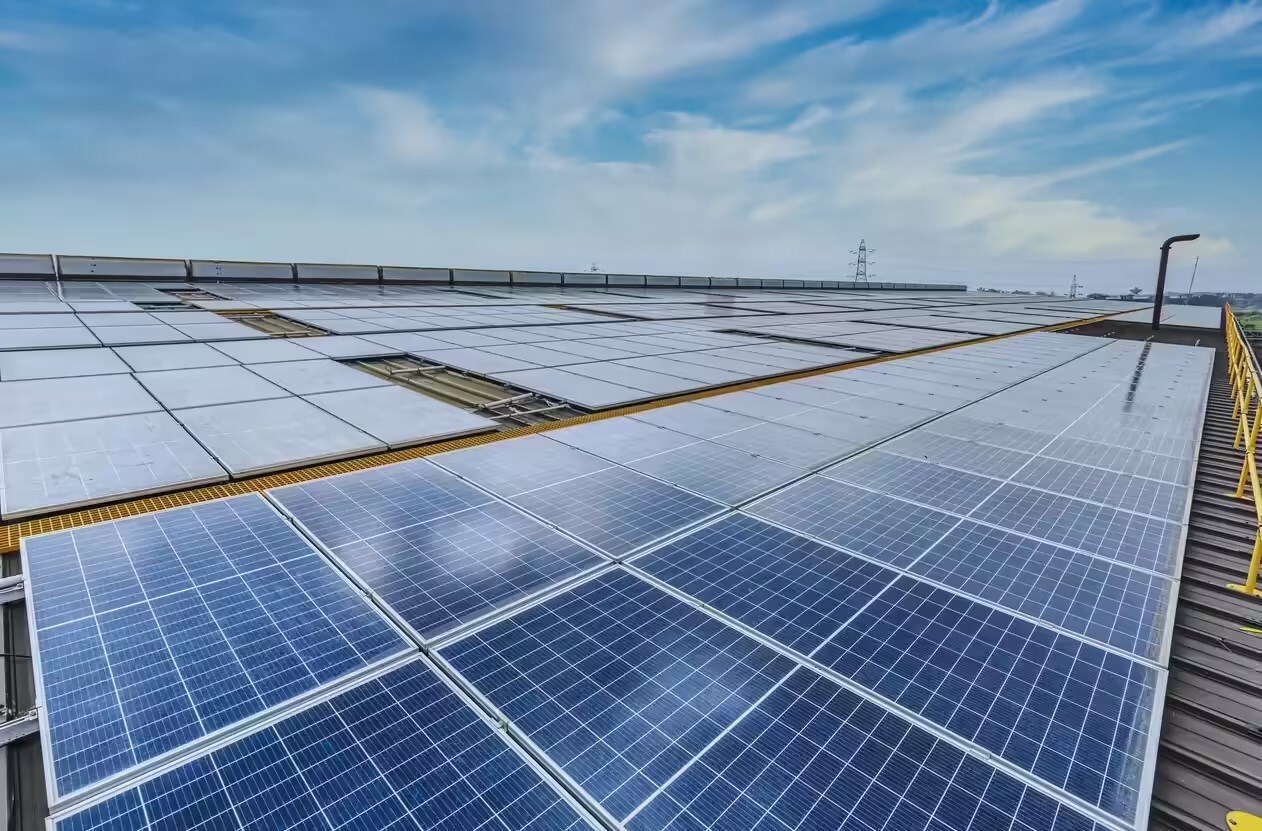

Mukesh Ambani-owned Reliance Industries Ltd (RIL) is all set to start solar power generation in the first half of FY 2026 at its Kutch facility hub. This is indeed a great move towards realising India’s clean energy ambitions. The upcoming renewable energy facility in Kutch, Gujarat, spanning over 5,000 acres, is going to be among India’s largest renewable hubs.

Explore- Most accurate data to drive business decisions with 50+ reports across the value chain
This initiative is the realistic version of Ambani’s much-awaited vision to transform RIL from its petroleum-based legacy to a leader in sustainable energy innovation. For this, he has had pledged an investment of USD 10 billion.
The project forms part of the larger Dhirubhai Ambani Green Energy Giga Complex in Jamnagar, designed to be one of the world’s most advanced integrated renewable energy manufacturing hubs.
RIL’s project of unprecedented scale
The Jamnagar complex is already drawing comparisons across the global energy landscape. Its scale is said to be four times larger than Elon Musk’s Tesla Gigafactory and the construction is said to use an enormous volume of steel - reportedly comparable to dozens of major global structures.
As detailed by Anant Ambani at RIL’s Annual General Meeting earlier this year, the group’s renewable roadmap includes major developments in solar photovoltaic (PV) manufacturing, battery storage, and green hydrogen production. RIL aims to install 20 gigawatts (GWp) of solar PV capacity and 100 gigawatt-hours (GWh) of battery giga-factory output in the future.
Don't miss out- Buyers are looking for your products on our B2B platform
RIL expands renewable footprint with battery storage and green hydrogen project
Solar energy generation is limited to daylight hours, but RIL’s mega project for battery storage is constructed to address this issue. It will help provide an uninterrupted electricity supply. At present, the company owns a 40 GWh manufacturing capability, which is likely to scale up in the coming years.
Simultaneously, to nurture solar energy production, RIL is also building up a green hydrogen plant, which is expected to produce 3 million tonnes of green hydrogen annually by 2032. The newly constructed plant is going to produce batteries and electrolysers. This will significantly reduce India’s dependence on imports of clean energy.
From humble beginnings to global leadership
This vast industrial expansion started long back in 1958, when Dhirubhai Ambani established Reliance Commercial Corporation as a trading firm in polyester yarn and spices. Over the years, it has emerged into a multinational conglomerate in Mumbai, which has later diversified into industries that include energy, petrochemicals, retail, telecommunications, entertainment, and more.
RIL’s current project is positioning it as a global force in renewable energy transformation, which is reinforcing India’s status close to a net-zero carbon target by 2035.
Must read: Key industry individuals share their thoughts on the hottest topics
Responses








